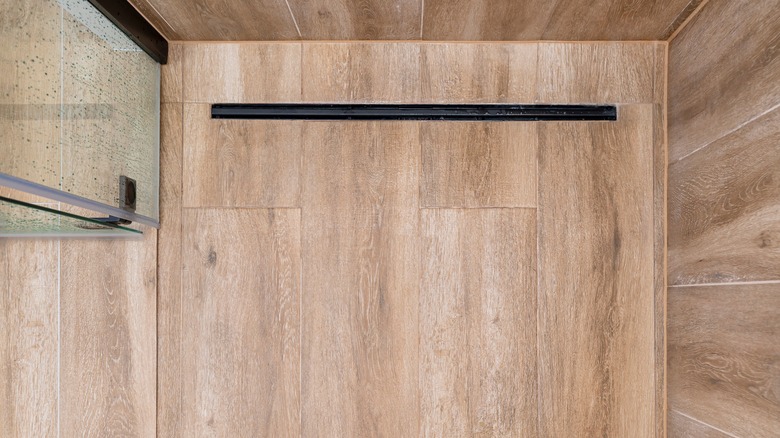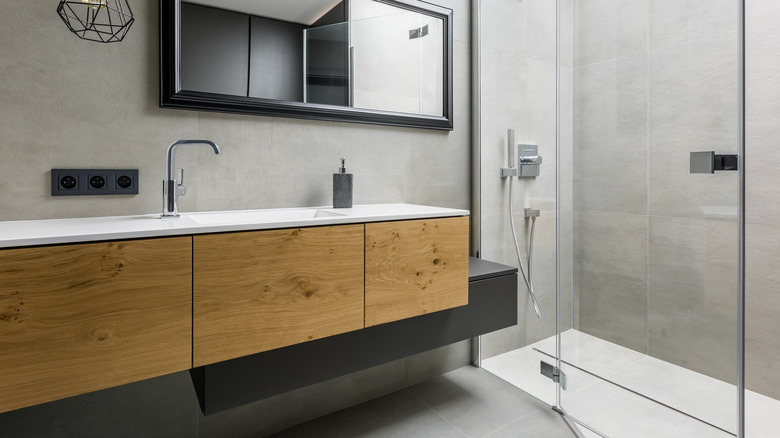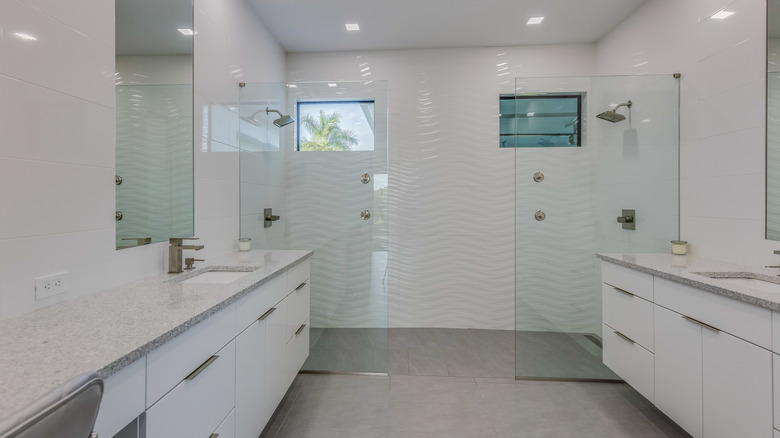Why You Should Consider A Linear Shower Drain For Optimal Drainage
Circular or squared center shower drains are such a common sight in a bathroom; it can be a head-turner when you pull back the curtain and don't spot one. A linear shower drain is a showstopper, literally. Many are installed to be a statement piece or a seamless way to extend a design throughout the entire bathroom. But there's more to a linear drain than the look; it can be functional, too.
Because of the elongated design, a linear shower drain lends itself to better drainage. Put simply; it has more surface area. A traditional center drain only covers about 4 square inches. The size of a linear drain is customizable and can span an entire wall if you like. That's more space for water to find its proper destination.
If you really want to optimize drainage, you could even install two linear drains in a single shower. A duo of drains can be installed on the same side, on opposite walls, or perpendicular to one another. Either of the two latter options would require sloping two sides of the floor. Yet that route would still require fewer sloped sides than a four-sided center drain.
Clogging is less of an issue
The additional surface area of a linear drain means spending less time unclogging a shower, too. Consider how quickly a center drain gets covered in hair, dirt, and other shower debris. It doesn't take much to clog up the tiny holes that span those 4 square inches. Linear drains are akin to a gutter. Most have wider and longer openings than center drains, allowing for hair and other runoff to easily pass through rather than accumulate on top. Many linear designs also come with an easy-to-remove debris trap so you can prevent buildup in the waste pipe.
When it comes to remodeling a shower with a linear drain, knowing the location of that waste pipe and any other plumbing is an important piece in the replacement puzzle, especially if you're moving from a center drain to one closer to the wall. The drain system underneath your shower isn't made to move. It's possible, but it will take time and money. Luckily, a linear drain comes with a bit of leeway, and a custom path can be created to reach the existing pipe. For a new home build, you'll want to know pretty early on where the shower drain will be located so the drain system can be properly placed.
Where linear drains benefit most
Any type of shower can benefit from the optimal drainage provided by a linear drain. That said, this design is especially popular and practical for walk-in showers. Sometimes called curbless showers, walk-ins are valued for their versatility. They can be built to fit in nearly any space, from small apartments to luxury bathrooms, and to the needs of any homeowner.
For older adults and those with mobility issues, a walk-in shower provides a safe way to get clean. A linear drain is an extension of that safety and practicality. The need for a raised ledge in the floor to hold in water can be eliminated with a well-placed linear drain. Wheelchairs can access the shower easier this way, and no step means no tripping hazard. Plus, if the shower is draining better due to a linear drain, that's less standing water and fewer chances of a slip.


